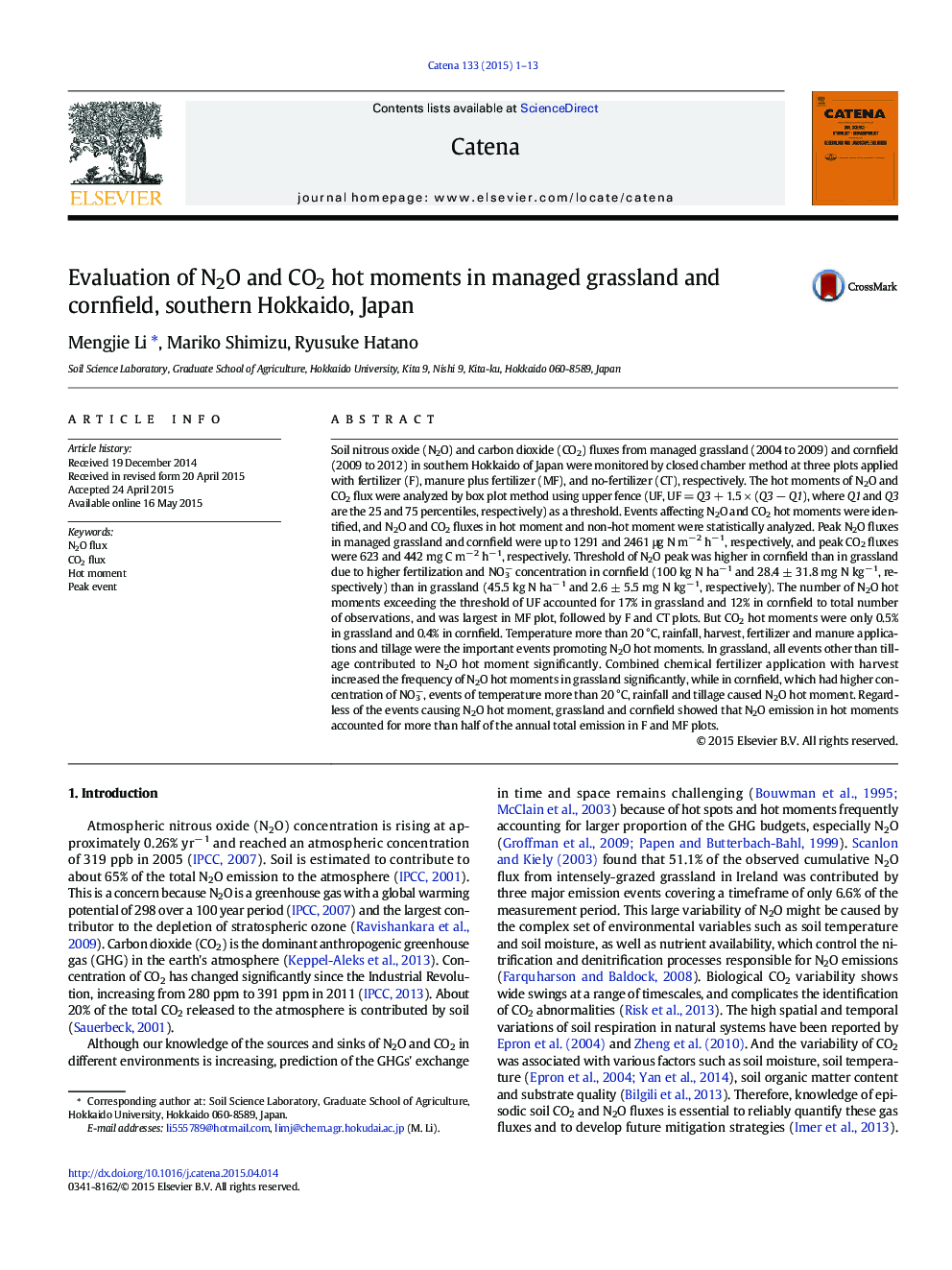| کد مقاله | کد نشریه | سال انتشار | مقاله انگلیسی | نسخه تمام متن |
|---|---|---|---|---|
| 4571017 | 1629219 | 2015 | 13 صفحه PDF | دانلود رایگان |

• We assess temporal variability of long-term N2O and CO2 fluxes.
• We investigate the reasons inducing potential N2O and CO2 hot moments.
• We identify the contribution of N2O and CO2 peak emissions at annual timescales.
• N2O flux was much greater episodic than CO2 flux.
Soil nitrous oxide (N2O) and carbon dioxide (CO2) fluxes from managed grassland (2004 to 2009) and cornfield (2009 to 2012) in southern Hokkaido of Japan were monitored by closed chamber method at three plots applied with fertilizer (F), manure plus fertilizer (MF), and no-fertilizer (CT), respectively. The hot moments of N2O and CO2 flux were analyzed by box plot method using upper fence (UF, UF = Q3 + 1.5 × (Q3 − Q1), where Q1 and Q3 are the 25 and 75 percentiles, respectively) as a threshold. Events affecting N2O and CO2 hot moments were identified, and N2O and CO2 fluxes in hot moment and non-hot moment were statistically analyzed. Peak N2O fluxes in managed grassland and cornfield were up to 1291 and 2461 μg N m− 2 h− 1, respectively, and peak CO2 fluxes were 623 and 442 mg C m− 2 h− 1, respectively. Threshold of N2O peak was higher in cornfield than in grassland due to higher fertilization and NO3− concentration in cornfield (100 kg N ha− 1 and 28.4 ± 31.8 mg N kg− 1, respectively) than in grassland (45.5 kg N ha− 1 and 2.6 ± 5.5 mg N kg− 1, respectively). The number of N2O hot moments exceeding the threshold of UF accounted for 17% in grassland and 12% in cornfield to total number of observations, and was largest in MF plot, followed by F and CT plots. But CO2 hot moments were only 0.5% in grassland and 0.4% in cornfield. Temperature more than 20 °C, rainfall, harvest, fertilizer and manure applications and tillage were the important events promoting N2O hot moments. In grassland, all events other than tillage contributed to N2O hot moment significantly. Combined chemical fertilizer application with harvest increased the frequency of N2O hot moments in grassland significantly, while in cornfield, which had higher concentration of NO3−, events of temperature more than 20 °C, rainfall and tillage caused N2O hot moment. Regardless of the events causing N2O hot moment, grassland and cornfield showed that N2O emission in hot moments accounted for more than half of the annual total emission in F and MF plots.
Journal: CATENA - Volume 133, October 2015, Pages 1–13